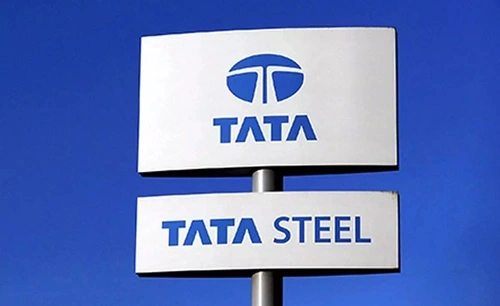Tata Steel, a part of the renowned Tata Group, is one of the world’s most respected and efficient steel producers. Founded in 1907, it holds the distinction of being the first integrated private sector steel company in India. Over the decades, Tata Steel has grown from a national industrial pioneer to a global steelmaking giant with operations in more than 20 countries and a commercial presence in over 50.
As of 2025, Tata Steel is the second-largest steel producer in India and ranks among the top global steel manufacturers. With a consolidated crude steel production capacity exceeding 34 million tonnes per annum (MTPA), including its European operations, Tata Steel is focusing aggressively on green steel, digitalization, and downstream value-added products. The company has taken bold steps toward carbon neutrality, circular economy initiatives, and a greater emphasis on responsible mining and supply chain transparency.
This SWOT (Strengths, Weaknesses, Opportunities, and Threats) analysis sheds light on the internal capabilities and external dynamics influencing Tata Steel’s performance and potential.

Strengths: Solid Foundations of Tata Steel’s Market Leadership
1. Integrated Operations and Diversified Portfolio
Tata Steel operates across the entire steel value chain—from mining iron ore and coal to manufacturing and distribution, making it one of the few truly integrated players in the industry. Its product range includes automotive steel, structural steel, long and flat products, and branded consumer products like Tata Tiscon and Tata Shaktee.
2. Strong Domestic Presence and Global Reach
Tata Steel has a strong foothold in India, where steel demand is growing rapidly due to infrastructure development, housing, and industrial activity. Internationally, it has a robust presence in Europe, Southeast Asia, and the UK through Tata Steel Europe and NatSteel.
3. Sustainability and ESG Leadership
Tata Steel is widely recognized as a leader in environmental, social, and governance (ESG) practices. It has committed to achieving net-zero carbon emissions by 2045, far ahead of many global peers. Its green steel initiatives, scrap-based production (Electric Arc Furnaces), and water-positive operations stand out as industry benchmarks.
4. Technological Advancements and Digitization
Through its ‘Smart Manufacturing’ program, Tata Steel leverages AI, robotics, IoT, and advanced analytics across operations. Its digital transformation initiatives have improved productivity, quality control, and predictive maintenance, making plants more efficient.
5. Brand Legacy and Trust
Being part of the Tata Group, the brand enjoys immense goodwill. It is known for ethical governance, employee welfare, and community development—key factors that enhance its stakeholder trust.
Weaknesses: Internal Challenges to Address
1. High Exposure to Cyclical Industry Trends
Steel is a cyclical industry, and Tata Steel is susceptible to global fluctuations in demand, raw material prices, and economic slowdowns. These cycles can result in volatile margins and profit pressures.
2. European Operations Under Stress
Tata Steel Europe has faced prolonged challenges due to high energy costs, labor regulations, and environmental compliance issues. While there are ongoing turnaround efforts, the unit continues to be a drag on consolidated performance.
3. Debt Burden and Capital Intensity
Although the company has made progress in deleveraging, its consolidated debt remains relatively high, driven by capex for sustainability, acquisitions, and modernization. The capital-intensive nature of steelmaking also limits quick financial flexibility.
4. Raw Material Dependency and Logistics Costs
Despite owning captive mines, any supply chain disruptions or regulatory changes can impact operations. Transportation and energy logistics continue to pose challenges, particularly in international markets.
Opportunities: Growth Avenues for the Future
1. Green Steel and Sustainable Manufacturing
With growing global emphasis on decarbonization, Tata Steel’s early investments in green hydrogen, carbon capture, and scrap-based EAFs position it to lead the next phase of sustainable steel production. Demand for green steel is rising from automotive, infrastructure, and consumer durable
2. Expansion in India and Southeast Asia
India’s infrastructure boom—driven by Smart Cities, Bharatmala, PM Gati Shakti, and real estate growth—will spur demand for steel. Tata Steel’s recent expansion in Kalinganagar and Meramandali projects are aligned with this rising demand. The growing construction market in ASEAN also offers export potential.
3. Value-Added and Branded Products
There is increasing demand for customized, high-strength steel used in auto, defense, rail, and appliances. Tata Steel is focusing on high-margin, value-added products and downstream processing, offering better returns and customer stickiness.
4. Digital Supply Chains and E-Commerce
With the rise of B2B e-commerce in the industrial sector, Tata Steel’s “Aashiyana” and “Tata Steelium” digital platforms are transforming the customer buying experience, especially among SMEs and retail fabricators.
5. Circular Economy and Recycling
Scrap recycling and secondary steel production present a big opportunity. Tata Steel is investing in steel recycling plants and urban mining as part of its circular economy strategy, reducing emissions and conserving resources.
Threats: External Risks That Could Impact Growth
1. Global Economic Slowdowns
A slowdown in major economies, including China, Europe, and the US, could reduce global steel demand and affect pricing. Tata Steel’s international exposure makes it vulnerable to global economic fluctuations.
2. Regulatory and Environmental Pressures
Environmental norms, especially in Europe, are becoming stricter. Carbon pricing, emission caps, and ESG compliance requirements may increase operational costs and require continuous investment.
3. Competition from Low-Cost Producers
Steel producers from China, Vietnam, and Russia often undercut global prices, posing a threat to Tata Steel’s exports. Dumping of cheaper steel also remains a recurring industry concern.
4. Volatility in Raw Material Prices
Steel production is heavily reliant on iron ore, coal, and energy prices, which are volatile due to geopolitical tensions, natural disasters, or trade restrictions. Price spikes can impact input costs significantly.
Conclusion: Tata Steel – Forging Ahead with Purpose, Technology, and Sustainability
In 2025, Tata Steel is not just producing steel—it is reshaping how steel is made and used in a modern, sustainable world. With a commitment to carbon neutrality, technological innovation, and value-added solutions, the company is ready to lead India’s and the world’s next phase of industrial growth.
Overall, Tata Steel’s strengths in integration, brand equity, and sustainability far outweigh its cyclical challenges and international pressures. By staying ahead of environmental and technological trends, Tata Steel is forging a resilient, responsible, and resource-efficient future—one beam, sheet, and bar at a time.

Meet Suhas Harshe, a financial advisor committed to assisting people and businesses in confidently understanding and managing the complexities of the financial world. Suhas has shared his knowledge on various topics like business, investment strategies, optimizing taxes, and promoting financial well-being through articles in InvestmentDose.com


